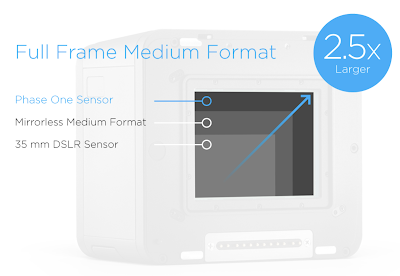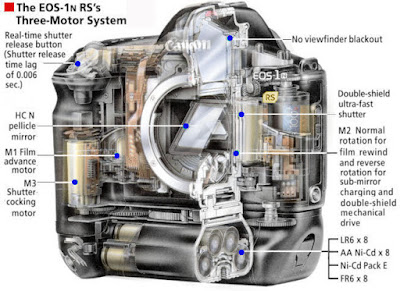The Impending 35mm Format Crisis
It used to be that 35mm format (which we will call 135F) was a low-resolution mass consumer format.
It was considered acceptable for professional use in the film age only for field use in reportage, sports, and wildlife photography. That said, towards the end of the film age, the grain of film became finer, resulting in better quality images from smaller formats.
The progressive evolution of 135F into a higher resolution image format has continued into the digital age. Amongst digital formats, at one point in history, it used to be the largest format utilised in civilian photography, and for that reason, the advertising moniker from around 2002 touting it as "full frame" became stuck in popular usage, despite the emergence of several digital sensor formats above it. Whatever the case, digital 135F has gradually matured into an increasingly high-resolution format, increasingly exceeding the resolutions it achieved in the film era. Canon have experimental 120MP and 250MP prototypes of 135F sensors in the wings. It is clear that 135F is evolving into a miniature-medium format.
At the same time, serious sports and wildlife photographers have continued their film era habit of shooting in 135F. The trouble is that formats smaller than 135F are becoming increasingly mature as field systems. A 300mm M4/3 lens and a 400mm APS-C lens have as much reach as a 600mm 135F lens. The weight and size reduction achieved over 135F can be considerable, especially if one has to take the lenses on international flights.
The result is that 135F is going to become the medium format of the field photography world. It is fine if you want to shoot sports and wildlife at ultra-high resolutions (50MP+) using massive lenses with an ultra-shallow depth of field. The cost is not only financial but ergonomic in terms of the back-breaking weight that comes with long-throw telephoto lenses. If the ergonomics are tolerable and you can afford it, 135F will reign as the queen of field photography formats.
If the film-era habit of shooting in 135F for field work is slowly abandoned, the question then becomes whether 135F is better suited for studio photography as a poor photographer's ersatz medium format system. There too 135F will face escalating competition from real medium format systems that are becoming increasingly more mature and cost-effective.
With competition from formats above and below it escalating, the comfortable position occupied by 135F as an all-encompassing multi-purpose system during the first two decades of the digital era might be coming slowly to a close.
Not only that but the inflated prestige and status associated with the format will slowly wither as it becomes just another format amongst many others. The advertising hyperbole of proclaiming it as "full frame" will slowly begin to sound hollow as the cost of production of this format plummets in the face of increasingly intense competition from formats above and below it in size. The shiny lustre associated with the format will slowly wear off as inexpensive entry-level 135F models become rather commonplace amongst enthusiast photographers.
For the time being, there has been a progressive increase in the number of manufacturers entering into the digital 135F format marketplace in the hope of capitalising on the inflated perception the mass consumer market still has about this supposedly "full frame" format. Part of the reason for this is that makers have started to believe their own advertising proclaiming 135F as some sort of exceptional format, one that is "special" and "different" for being an aspirational format bequeathed of magical properties elevating it above all others, by the mere virtue of it having been dubbed by the advertising department as "full frame". As competition drags entry-level prices down, that magic will rapidly wear off. It will not be long before manufacturers sell basic models at near give-away prices in the hope of making a profit off lens sales instead.
There will be those who triumphantly proclaim the bright future of 135F sporting a 250MP sensor, but this too is problematic. In order to make the lenses able to resolve this much detail, they will have to be made much bigger, more expensive, and more medium format like in their ergonomics. None of Canon's current lenses are designed to be able to resolve that highly. Diffraction will increasingly make it difficult to squeeze more resolution out of a lens without increasing the format size.
In conclusion, 135F is slowly returning to once more become just another common consumer format amongst many others as it was in the film era. Its place alongside other formats will evolve as technology changes and cost of manufacture continues to fall for the format. That there is a future for the format is not in doubt, but it is simply inevitable that it will play a different role in the market compared to the place it has occupied in the last two decades.




Comments
Post a Comment